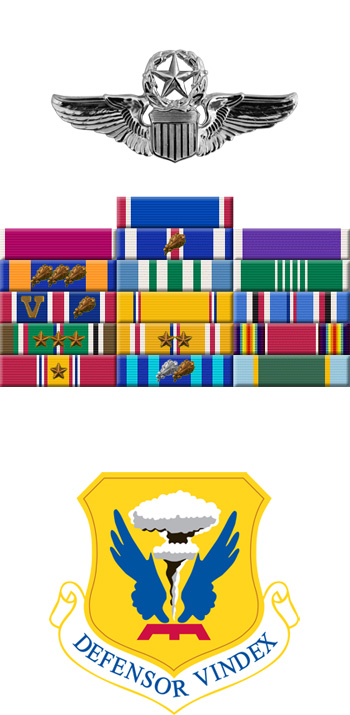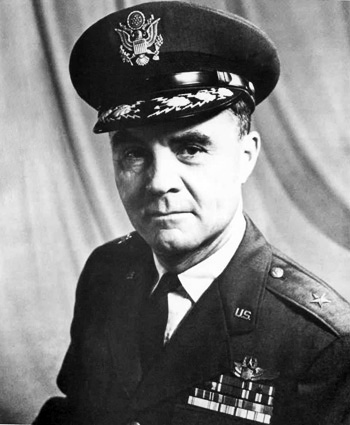
|
Paul W. Tibbets, Jr. |
 |
|||
| Rank, Service | ||||
Brigadier General O-7, U.S. Air Force |
||||
| Veteran of: | ||||
|
||||
| Tribute: | ||||
Paul Tibbets was born on February 23, 1915, in Quincy, Illinois. After graduating from the University of Cincinnati, Ohio, with a Bachelor's degree in Chemistry, he enlisted in the Aviation Cadet Program of the U.S. Army Air Corps on February 25, 1937. Tibbets was commissioned a 2nd Lt and awarded his pilot wings at Kelly Field, Texas, on February 16, 1938. His first assignment was to the 16th Observation Squadron at Fort Benning, Georgia, from February 1938 to April 1941. He then served with the 3rd Bomb Group at Savannah AAFB, Georgia, from April 1941 to February 1942. Tibbets served briefly with the 29th Bomb Group before being made commander of the 340th Bomb Squadron, 97th Bomb Group, at MacDill AAFB, Florida. His squadron deployed to England in June 1942, and Col Tibbets flew 25 combat missions, including the first American raid against occupied Europe, before moving to North Africa for Operation Torch. He returned to the U.S. in March 1943 and was assigned to the B-29 Superfortress bomber program, where he was responsible for flight test work until March 1944, when he became director of operations for the B-29 instructor transition school in Grand Island, Nebraska. His next assignment was with the Atomic Bomb Project, where he served as the Air Force officer in charge of developing the squadron that would employ the atomic bomb in combat. Col Tibbets created the 509th Composite Group and took command on December 17, 1944, at Wendover AAF, Utah. He deployed with the group to Tinian Island in June 1945, and dropped the first atomic bomb "Little Boy" on Hiroshima, Japan, on August 6, 1945, from a B-29 named "Enola Gay". Tibbets left Tinian in September 1945, and relocated with the 509th to Roswell AAF, New Mexico in November 1945. He turned over command of the 509th in January 1946, and then served as an advisor in the Bikini atomic bomb tests at Kwajalein from April to July 1946. Col Tibbets then attended Air Command and Staff School before serving with Headquarters U.S. Air Force in the Pentagon from September 1947 to June 1950. He served as project officer for the B-47 Stratojet at Boeing from July 1950 to February 1952, and then as commander of the Proof Test Division at Eglin AFB, Florida, from February 1952 to August 1953. After attending Air War College from August 1953 to July 1954, he served as director of war plans with Allied Air Forces Central Europe at Fountainebleau, France, from July 1954 to February 1956. His next assignment was as Commander of the 308th Bomb Wing at Hunter AFB, Georgia, from March 1956 to January 1958, and then as Commander of the 6th Air Division at MacDill AFB, Florida, until February 1961. He served another tour at the Pentagon from February 1961 to August 1964, and then as military attache in New Delhi, India, from August 1964 until his retirement from the Air Force on September 1, 1966. Paul Tibbets died on November 1, 2007. His remains were cremated and his ashes were scattered into the English Channel at his request. |
||||
|
||||

